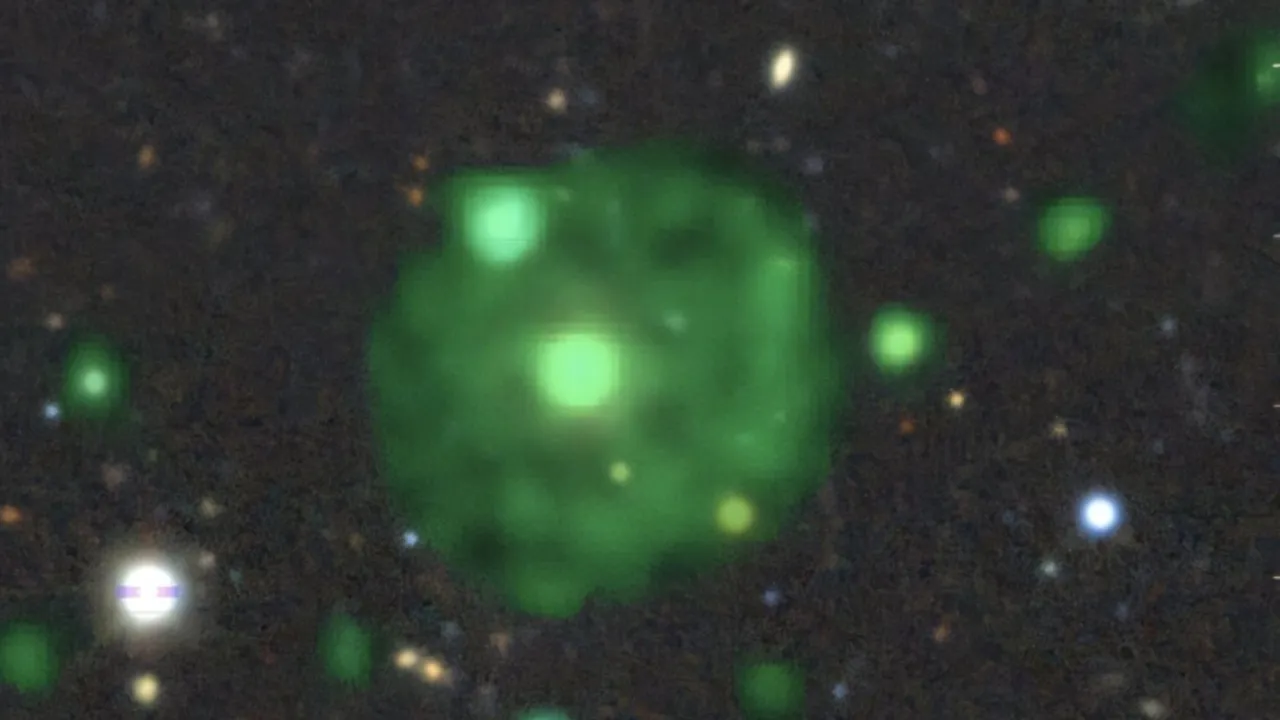Introduction: Why Some Elements Remain Mysterious
The periodic table is more than just a chart of chemical elements; it’s a map of the building blocks that make up our universe. Yet, even with centuries of scientific progress, some elements continue to puzzle researchers and enthusiasts alike. These mysterious elements on the periodic table hold secrets that challenge our understanding of chemistry and physics, making them fascinating subjects for study and curiosity.
One reason some elements remain mysterious is their rarity. Certain elements exist only in trace amounts in nature or can be produced only under extreme laboratory conditions. Because of this, scientists have limited opportunities to observe their properties directly. For example, elements like astatine and francium decay so quickly that studying them requires highly specialized equipment and techniques. This scarcity makes it difficult to gather enough data to fully understand their behavior.
Another factor is the unusual or unpredictable properties these elements exhibit. Many of the mysterious elements on the periodic table have atomic structures that don’t behave like the more common elements we encounter daily. Some show unexpected states of matter, unique radioactive behaviors, or chemical reactions that defy simple explanations. These quirks often spark new theories and experiments, pushing the boundaries of science.
Lastly, the superheavy elements—those created in particle accelerators—add to the mystery. Elements beyond uranium, known as transuranic elements, have extremely short half-lives and complex nuclear structures. Their fleeting existence makes them both a challenge to study and a gateway to understanding nuclear physics and the forces holding atoms together.
In 2025, exploring these mysterious elements on the periodic table remains a thrilling frontier. Every discovery not only answers old questions but often raises new ones, reminding us how much there still is to learn about the fundamental pieces of our world.
The Enigmatic Nature of Rare Earth Elements
Rare earth elements have earned their name due to their elusive and fascinating nature. Despite being relatively abundant in the Earth’s crust, these elements are rarely found in concentrated, easily accessible deposits, which makes mining and extraction a complex process. This scarcity in pure form contributes to their mysterious reputation among scientists and industry experts.
What makes rare earth elements particularly intriguing is their unique electronic configurations. These elements, which include lanthanides like neodymium and europium, possess distinctive magnetic, optical, and catalytic properties that have revolutionized modern technology. From powerful magnets in electric vehicles and wind turbines to advanced displays in smartphones and lasers, rare earth elements are at the heart of many cutting-edge innovations.
However, their chemical behavior is complex and not always fully understood. The subtle differences in their atomic structures lead to nuanced variations in how they react with other elements, making research both challenging and rewarding. Scientists continue to explore their potential uses while uncovering new details about their properties.
In 2025, rare earth elements remain a critical focus of study due to their strategic importance and the ongoing global demand for sustainable technologies. Understanding these enigmatic elements on the periodic table not only advances science but also supports innovations that can transform energy, electronics, and environmental solutions for the future. Their mysterious nature keeps researchers intrigued, making rare earth elements some of the most captivating subjects in modern chemistry.
Unusual Properties of Transuranic Elements
Transuranic elements—those with atomic numbers greater than uranium (92)—are some of the most intriguing and mysterious elements on the periodic table. These elements don’t occur naturally in significant amounts and are typically created artificially in laboratories or nuclear reactors, making their study both challenging and exciting.
One of the most unusual properties of transuranic elements is their extreme instability. Many of these elements have very short half-lives, meaning they decay rapidly into lighter elements. This fleeting existence limits how much scientists can observe and understand about their chemical and physical behaviors. Despite this, transuranic elements have unique nuclear properties that provide valuable insights into the forces that hold atomic nuclei together.
Another striking feature of transuranic elements is their often unpredictable chemistry. Because they exist at the edge of the periodic table, their electron configurations can lead to unexpected bonding patterns and reactivity. This makes them a playground for researchers trying to test the limits of chemical theory and atomic models.
In addition to their scientific interest, transuranic elements have practical uses in medicine, industry, and energy. For example, americium is commonly used in smoke detectors, while californium has applications in neutron sources and cancer treatment.
As of 2025, the study of transuranic elements continues to push boundaries in nuclear chemistry and physics. Scientists strive to synthesize even heavier elements and understand their properties, uncovering more of the mysterious secrets hidden at the far reaches of the periodic table. These unusual elements challenge our knowledge and inspire new discoveries about the building blocks of matter.
Element 115 (Moscovium) – The Superheavy Mystery
Element 115, known as Moscovium, stands out as one of the most mysterious and intriguing superheavy elements on the periodic table. First synthesized in 2003, Moscovium doesn’t occur naturally and exists only for fractions of a second before decaying into lighter elements. This extreme instability makes studying Moscovium a formidable challenge for scientists worldwide.
Moscovium’s position in the periodic table places it among the transactinide elements, which are known for their complex nuclear structures and unpredictable behavior. Researchers are fascinated by Moscovium because it lies near the theorized “island of stability,” a region where superheavy elements might have longer half-lives and more stable atomic nuclei. Confirming this could unlock new insights into nuclear physics and the forces that bind atoms together.
Despite its short lifespan, Moscovium has already sparked speculation beyond the lab. It gained popular attention through science fiction and conspiracy theories, often linked to futuristic technologies and unexplained phenomena. However, the real scientific intrigue lies in understanding its atomic properties and potential applications, which remain largely theoretical at this stage.
In 2025, ongoing experiments with particle accelerators continue to probe Moscovium’s characteristics, hoping to uncover more about its chemical behavior and potential stability. Studying element 115 helps scientists push the boundaries of the periodic table and explore the limits of matter itself. As research progresses, Moscovium remains a superheavy mystery that could reshape our understanding of atomic science and the universe’s fundamental building blocks.
Tennessine (Element 117) and Its Elusive Behavior
Tennessine, or element 117, is one of the newest and most elusive additions to the periodic table. Discovered only recently, this superheavy element exists for just milliseconds before decaying, making it extremely difficult to study. Its fleeting presence adds to the mystery surrounding its properties and behavior.
Being a member of the halogen group, Tennessine is expected to share some chemical traits with elements like iodine and astatine. However, its superheavy nature means that relativistic effects—changes in electron behavior caused by its large atomic mass—could cause it to behave quite differently from its lighter counterparts. This makes predictions about its chemical reactions and bonding more complex and less certain.
Scientists are particularly interested in Tennessine because it sits close to the theorized “island of stability,” where superheavy elements might have longer lifespans and unique properties. If Tennessine or its isotopes prove more stable than expected, it could open up new possibilities in chemistry and physics research.
In 2025, much about Tennessine remains unknown due to the difficulty in producing and detecting it. Advanced particle accelerators and detection methods are essential tools for researchers attempting to learn more. Studying Tennessine’s elusive behavior not only expands our knowledge of superheavy elements but also challenges existing theories about atomic structure and chemical bonding.
Overall, Tennessine represents the cutting edge of periodic table research—a mysterious element that continues to intrigue scientists as they explore the outer limits of atomic science.
Astatine – The Rarest Naturally Occurring Element
Astatine holds the title of the rarest naturally occurring element on the periodic table, making it a true enigma in the world of chemistry. Unlike synthetic superheavy elements created in laboratories, astatine forms naturally in tiny amounts through the radioactive decay of heavier elements like uranium and thorium. However, because of its extreme rarity and instability, it remains one of the least understood elements.
One of the biggest challenges with astatine is its short half-life. Most of its isotopes decay within hours or even minutes, which means very little accumulates in the Earth’s crust at any given time. This fleeting existence makes it incredibly difficult for scientists to isolate and study its properties in detail.
Chemically, astatine is part of the halogen family, alongside elements like fluorine, chlorine, and iodine. However, its behavior often surprises researchers. Due to its heavy atomic mass and radioactivity, astatine’s chemical reactions can differ significantly from other halogens, sometimes displaying metallic properties or unusual bonding patterns. This unpredictability adds to its mysterious reputation.
In practical terms, astatine has limited applications because of its scarcity and radioactivity, but it shows promise in targeted cancer therapies, where its radioactive isotopes could help destroy malignant cells with precision.
As of 2025, astatine continues to captivate scientists who are eager to unlock its secrets despite the challenges. Studying this rare element not only expands our knowledge of the natural world but also deepens our understanding of how elements behave at the edges of stability and rarity. Astatine’s elusive nature makes it a fascinating subject in the ongoing quest to unravel the mysteries of the periodic table.
Francium – The Most Unstable Alkali Metal
Francium is often called the most unstable alkali metal on the periodic table, and for good reason. It is one of the rarest and most radioactive elements found in nature, existing only in minute amounts as a result of the decay of heavier elements. Its extreme instability and scarcity make francium one of the most mysterious elements scientists continue to study.
Unlike other alkali metals like sodium or potassium, francium has a very short half-life, typically lasting only about 22 minutes before it decays into other elements. This fleeting existence means it’s nearly impossible to accumulate enough francium for extensive experimentation, so much of what we know about it comes from theoretical models and indirect observations.
Chemically, francium is expected to behave similarly to cesium, its lighter alkali metal cousin, but its heavy atomic weight and radioactivity can cause subtle differences in its reactivity and bonding. These differences are still largely unknown, as practical studies on francium remain limited.
Despite its challenges, francium holds scientific interest because it pushes the boundaries of our understanding of atomic behavior in heavy elements. Its position at the bottom of the alkali metal group provides clues about how elements change as atomic numbers increase.
In 2025, francium remains a captivating subject in nuclear chemistry and physics. Researchers continue to explore its properties using advanced technology, hoping to uncover more about this most unstable alkali metal. Studying francium not only deepens our grasp of radioactive elements but also sheds light on the fundamental forces shaping the periodic table.
The Strange World of Promethium
Promethium is one of the most intriguing and unusual elements on the periodic table. Unlike most elements, it doesn’t occur naturally in significant amounts on Earth and is primarily produced synthetically in nuclear reactors. This rarity adds to its mysterious reputation and makes it a fascinating subject of scientific study.
One of the most striking features of promethium is its radioactivity. All of its isotopes are unstable, with half-lives ranging from minutes to a few years, so promethium continuously decays into other elements. This constant transformation makes it difficult to study and limits its practical applications. Despite this, promethium has found niche uses, such as in luminous paint, nuclear batteries, and certain types of scientific instruments.
Chemically, promethium belongs to the lanthanide series, often called the rare earth metals. It shares many properties with its lanthanide neighbors, but its radioactivity and scarcity set it apart. Researchers remain curious about its behavior under various conditions, as studying promethium helps fill gaps in our understanding of the lanthanide group as a whole.
In 2025, scientists continue to explore the strange world of promethium, uncovering more about its atomic structure, decay processes, and potential applications. Although much about this element remains elusive, its unique characteristics make it an essential piece of the puzzle in the broader story of the periodic table.
Promethium’s mysterious nature reminds us that even elements hidden in plain sight—or produced only in labs—can offer valuable insights into the fundamental workings of matter and the forces that govern our universe.
Why Some Elements Defy Complete Understanding
Certain elements on the periodic table continue to defy complete understanding, baffling scientists despite decades of research. The reasons behind this mystery are as complex as the elements themselves, involving factors like rarity, instability, and the limits of current technology.
One major challenge is that many mysterious elements are incredibly rare or exist only for fractions of a second. This makes it difficult to observe their properties directly or conduct repeated experiments. Without sufficient data, scientists must rely on theoretical models, which, while helpful, can only approximate how these elements behave.
Another factor is the unique and sometimes unpredictable behavior of these elements at the atomic level. As elements get heavier, their atomic nuclei become more complex, and the interactions between protons, neutrons, and electrons can lead to unexpected properties. Relativistic effects, which alter electron behavior at very high atomic numbers, further complicate understanding. These phenomena can cause elements to react in ways that defy traditional chemical rules.
Additionally, many of these elements exist at the frontier of human knowledge, where physics and chemistry intersect. Studying them requires cutting-edge technology like particle accelerators and advanced detectors, which are expensive and limited in availability. Even with these tools, gathering clear, consistent data is a daunting task.
In 2025, the ongoing research into these mysterious elements continues to push scientific boundaries. Each discovery helps refine existing theories and sometimes challenges what we thought we knew. The fact that some elements still resist full understanding reminds us that science is an evolving journey. Exploring these atomic mysteries not only expands our knowledge of the natural world but also inspires new technologies and innovations for the future.
Recent Discoveries and Theoretical Insights (2025 Update)
In 2025, the study of mysterious elements on the periodic table has entered an exciting new phase, thanks to advances in technology and theoretical research. Scientists are now able to create and observe superheavy elements more effectively, shedding light on properties that were previously impossible to study.
One of the most significant breakthroughs involves better understanding the so-called “island of stability.” This theoretical region predicts that certain superheavy elements could have much longer half-lives than their neighbors, potentially lasting minutes, hours, or even days. Recent experiments have produced isotopes closer to this island, providing valuable data on nuclear stability and atomic structure.
In addition, improvements in particle accelerators and detection equipment have allowed researchers to explore the chemical behavior of elements like tennessine and moscovium with greater precision. These insights challenge existing models and open new avenues for chemical research, potentially leading to novel applications in materials science and nuclear medicine.
Theoretical studies using advanced quantum mechanics and computer simulations have also made it possible to predict properties of yet-to-be-discovered elements. These models guide experimentalists by highlighting promising candidates for synthesis and helping to anticipate their characteristics.
Furthermore, collaboration between international laboratories has accelerated discoveries, pooling resources and expertise to push the limits of element research. This global effort not only enhances our understanding of mysterious elements on the periodic table but also strengthens the scientific community’s ability to explore uncharted atomic territory.
As we move forward in 2025, recent discoveries and theoretical insights continue to transform our view of the atomic world. Each finding brings us closer to unlocking the deepest secrets of matter and expanding the horizons of chemistry and physics.
The Future of Element Research: What Lies Beyond the Known?
As we look ahead, the future of element research promises to be one of the most thrilling frontiers in science. The periodic table, while seemingly complete, still holds many secrets, especially in the realm of superheavy and synthetic elements. Scientists are eager to explore what lies beyond the known elements and push the boundaries of our atomic knowledge.
One major focus is the quest to discover new elements beyond those currently identified, potentially expanding the periodic table even further. Researchers are using powerful particle accelerators to create these ultra-heavy atoms, hoping to find more members of the theorized “island of stability” where elements could exist longer and exhibit novel properties.
Advancements in technology will also play a key role in future element research. Improved detection methods, quantum computing, and artificial intelligence are enabling scientists to simulate and predict the behavior of unknown elements with greater accuracy, guiding experiments and saving valuable time and resources.
Beyond synthesis, understanding the practical applications of these elements is a growing area of interest. New elements could revolutionize fields such as energy, medicine, and materials science, offering properties that today’s elements cannot provide. This could lead to breakthroughs in everything from clean energy production to targeted cancer treatments.
Moreover, international collaboration and open data sharing will accelerate progress, allowing scientists worldwide to contribute their expertise and resources to this complex field.
In 2025 and beyond, the future of element research is bright and full of potential. The mysteries that remain challenge our curiosity and drive innovation, promising to reshape our understanding of matter and the universe itself. Exploring what lies beyond the known elements is not just a scientific pursuit—it’s a journey into the very fabric of reality.
Conclusion: Unlocking the Secrets of the Atomic World
The periodic table is far more than a simple chart—it is a gateway to understanding the fundamental building blocks of everything around us. Throughout history, scientists have unraveled many mysteries behind the elements, yet some still remain elusive, continuing to challenge our knowledge and spark curiosity.
From the rare earth elements with their unique technological applications to the superheavy, short-lived transuranic elements, each mysterious element on the periodic table holds clues about the forces and interactions that shape our universe. Advances in technology and theoretical science are gradually peeling back layers of mystery, allowing us to glimpse the atomic world in unprecedented detail.
As research progresses in 2025, the study of these elements not only expands the horizons of chemistry and physics but also fuels innovation across medicine, energy, and materials science. The ongoing quest to understand and discover new elements pushes the boundaries of human knowledge and reminds us that science is a never-ending journey of exploration.
Ultimately, unlocking the secrets of the atomic world deepens our appreciation of nature’s complexity and empowers us to harness the incredible potential hidden within the smallest particles of matter. The mysterious elements on the periodic table are a testament to the endless wonders that await discovery, inspiring scientists and curious minds alike to keep exploring the unknown.
Also Read: How Plants Communicate – And Other Surprising Botany Facts 2025.
FAQs: Common Questions About Mysterious Elements
1. What makes an element mysterious on the periodic table?
Elements are considered mysterious due to factors like rarity, instability, limited availability, or unusual chemical and physical properties that scientists have yet to fully understand.
2. Why are some elements so rare in nature?
Many rare elements either decay quickly, like radioactive elements, or are found only in trace amounts because of how they form in nature or their geological distribution.
3. What is the “island of stability” in element research?
The “island of stability” is a theoretical region on the periodic table where superheavy elements might have longer half-lives and greater stability, making them easier to study and potentially useful.
4. Are superheavy elements useful in practical applications?
While most superheavy elements have very short lifespans, some have found niche uses in scientific research, medicine, and industry, but their practical applications remain limited.
5. How do scientists create elements that don’t exist naturally?
Researchers use particle accelerators to smash lighter atomic nuclei together at high speeds, creating new, heavier elements that exist briefly before decaying.
6. Can new elements be discovered in the future?
Yes, scientists continue to search for new elements beyond the current periodic table limits, expanding our understanding of atomic structure and nuclear physics.
7. Why is it difficult to study unstable elements like francium or astatine?
Their extreme radioactivity and short half-lives mean they exist only momentarily, making it hard to collect enough samples for detailed study.
8. How do mysterious elements impact technology and science?
Studying these elements drives advancements in nuclear science, medicine, materials development, and helps refine theoretical models of atomic behavior.





























